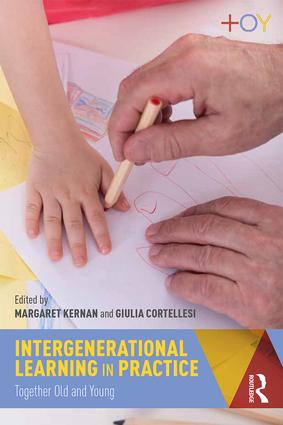Publications

Intergenerational Learning in Practice: the TOY Book
A new academic book celebrating the very best of intergenerational learning from around the world has been pubished: Intergenerational Learning in Practice. Together Old and Young.
Published by Routledge, the world’s learning academic publisher in Humanities and Social Sciences, it is hoped that Intergenerational Learning in Practice is the ‘go to’ text about intergenerational learning involving young children and older adults. Intergenerational Learning Practice is a valuable resource for practitioners and leaders in early childhood education and care and those working in schools, as well as professionals caring for older adults, and those working in community development.
Drawing on the Together Old and Young (TOY) programme, this book provides a comprehensive background to intergenerational learning, along with tools and resources to help develop and improve your own intergenerational practice.
Experienced international authors from Europe, North America and Australia provide a broad array of perspectives on intergenerational learning, ranging from pedagogy to planning and community development, and cover topics including:
- The context, theory and existing research behind intergenerational learning
- The changing relationships between young children and older adults
- Building communities and services for all ages
- Managing everyday encounters in public spaces between young and old
- Ensuring quality in intergenerational practice
- Insights on how intergenerational learning challenges discrimination
Intergenerational Learning in Practice is available to order online at this link.
If you want to know more about the book, read this interview with the editors and the review by Matthew Kaplan, Professor, Intergenerational Programs and Aging, Pennsylvania State University, USA:
“There is much to love about this book. The opening passage illuminates the contours of meaning and joyful engagement between an older adult volunteer and a classroom of tuned-in 5-year-olds reading together. The following 14 chapters introduce fresh concepts, perspectives, and examples of “intergenerational learning” in Europe, Australia, and the U.S. My favorite highlights: an intergenerational summer camp in Italy; “culturally responsive” storytelling to expose Aboriginal children to indigenous language and knowledge; intergenerational “play hubs” created with Roma children; and some spatial concepts and considerations for designing age-inclusive public spaces.”